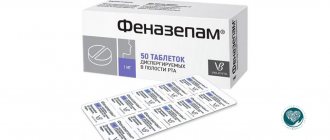Decoding indicators
Complete blood count, including leukocyte count and ESR. This analysis is a basic clinical test and allows you to evaluate the number of blood cells - red blood cells, leukocytes and platelets, as well as the level of hemoglobin and ESR. The identified changes may be associated with various physiological and pathological conditions, such as dehydration, autoimmune or infectious inflammation, blood loss, cancer, etc.
The main function of red blood cells and the hemoglobin they contain is to transport oxygen from the lungs to all tissues of the body. A decrease in hemoglobin (anemia) can be either an independent disease or a manifestation of any disease. Hemoglobin contains iron, and therefore one of the common causes of anemia is insufficient intake of iron from food, impaired absorption of iron in the intestine in acute or chronic gastrointestinal diseases. Anemia often develops due to increased iron consumption as a result of blood loss, inflammatory, oncological diseases, as well as due to impaired synthesis or hemolysis (destruction) of red blood cells, for example, in various hematological diseases.
Leukocytes protect the body from infections: they recognize and neutralize foreign agents - bacteria and viruses, and destroy altered cells of their own body. Different types of white blood cells - neutrophils, lymphocytes, monocytes, eosinophils and basophils - perform different functions. Their number and ratio are reflected in the leukocyte formula. An increase in the total white blood cell count (in combination with an increase in ESR) most often indicates a bacterial infection.
Platelets are used by the body to stop bleeding. In case of damage to the vascular wall, they rush to the site of damage, stick together, stick to the vascular wall, release substances necessary to form a “plug” - a blood clot, thereby stopping the bleeding. A decrease in the number of platelets can develop due to their increased consumption, destruction or insufficient production in various diseases. A pronounced decrease in platelets can lead to bleeding, a significant increase in their number in combination with other disorders in the coagulation system can lead to thrombosis.
Erythrocyte sedimentation rate (ESR) is a nonspecific indicator: its increase in most cases indicates pathology, but does not allow an accurate diagnosis to be made, so additional examination is required. The most common cause of increased ESR is inflammatory processes.
A biochemical blood test before hospitalization includes the determination of the following indicators: glucose, total protein, total bilirubin, direct bilirubin, ALT, AST, gamma-glutamyl transpeptidase (GGT), alkaline phosphatase, creatinine, urea, potassium, sodium, chlorine.
Glucose is the main source of energy for the cells and tissues of the body. The level of glucose in the blood naturally rises after eating, then with the help of insulin, glucose moves from the blood into the cells. A pathological increase in blood glucose in diabetes mellitus leads to damage (“sugarification”) of cell membrane proteins and disruption of the normal structure of all internal organs, and damage to the vascular wall. Since this disease aggravates the course of many other diseases and is a contraindication for the prescription of a number of medications, information about glucose levels is extremely important for drawing up a treatment plan in a hospital. A normal glucose level most likely indicates the absence of diabetes.
Total protein (the sum of albumins and globulins) is involved in blood clotting, performs a transport function, and participates in immune reactions. The level of total protein may change in liver and kidney diseases, metabolic disorders, cancer and infectious diseases.
The study of total and direct bilirubin, ALT, AST, GGT, alkaline phosphatase, as well as the determination of markers of hepatitis B and C is important for assessing liver function. An increase in these indicators can occur with fatty hepatosis, hepatitis, including viral etiology, liver cirrhosis, and liver failure. Since drug metabolism occurs in the liver, identifying abnormalities in its function is extremely important for selecting safe drug therapy.
Creatinine and urea reflect kidney function. If these indicators are elevated, a number of diagnostic procedures (for example, intravenous administration of an iodinated contrast agent during radiography) and medications that have a nephrotoxic effect, for example, non-steroidal anti-inflammatory drugs (painkillers), some antibiotics and antitumor agents, may be contraindicated.
Changes in the level of potassium, sodium, and chlorine indicate electrolyte imbalance in various pathological processes. For example, changes in potassium levels can lead to serious disturbances in heart rhythm and conduction, low blood pressure, muscle weakness and other manifestations.
A general urine test in preparation for hospitalization is carried out, first of all, to exclude bacterial inflammation - pyelonephritis, cystitis, prostatitis. In addition, the number of red blood cells and protein in the urine is assessed - as a possible manifestation of glomerulonephritis. Detection of a large number of red blood cells requires the exclusion of disorders in the blood coagulation system and urolithiasis. Detection of glucose in the urine may indicate decompensation of diabetes mellitus. If changes in the general urine analysis are detected, a urine test according to Nechiporenko may be additionally prescribed to count the number of leukocytes and red blood cells in 1 ml of urine, determination of protein, glucose in daily urine, urine culture test with determination of sensitivity to antibiotics, ultrasound of the kidneys, etc.
Before planned hospitalization, blood tests are performed to exclude HIV infection - antibodies to HIV 1 and 2 and HIV antigen 1 and 2 (HIV Ag/Ab Combo) are determined, to exclude viral hepatitis B and C - hepatitis B virus surface antigen (HBsAg, qualitative test) and antibodies to hepatitis C virus antigens (Anti-HCV-total) and to exclude syphilis - anticardiolipin test (syphilis RPR).
Determination of blood type and Rh status before hospitalization in the surgical department is necessary in case significant blood loss occurs during the operation and there is a need for emergency blood transfusion. Preoperative coagulation assessment is necessary to ensure that abnormal bleeding does not occur during surgery.
Anemia, decreased platelet levels, increased leukocytes and ESR, changes in the coagulogram may be a contraindication to elective surgery.
Test results and doctor’s prescriptions will be stored in State Services from 2021
11:50, 15.09.2019 1502
1
From September 1, 2021, you can make an appointment with doctors only through the government services portal.
In the future, the website will include electronic statements and medical records, preferential prescriptions in digital format and a robotic reminder system.
Let us remind you that from September 1, the online registration system medreg22.rf stopped working. The State Services that have replaced it will make online appointments with specialists more convenient and will offer several innovations that will greatly facilitate the lives of patients and doctors themselves.
So, from the beginning of next year, four hospitals in the region - the Regional Clinical Hospital, the diagnostic centers of Biysk, Rubtsovsk and Barnaul - will post electronic research results in the patient’s personal account on State Services. Gradually, this method of obtaining results will be available in all clinics in the region (until the end of 2021).
Another innovation will be the emergence of an electronic medical record. The paper version will remain for now, but it is the electronic format at State Services that will allow more attention to be paid to patients. This will also reduce the time it takes to fill out the card, and make medical statements more understandable.
— The doctor’s electronic signature will appear, and every document available on State Services will have legal force. Prescriptions for preferential drug coverage will also be available in electronic format. The person at the pharmacy will not need to present any kind of receipt. In January, this will already be fully operational,” says Vitaly Azanov, director of the Altai Regional Medical Information and Analytical Center.
In addition, a robotic system for reminding doctors about appointments has already been launched in the region. It is already being tested at clinic No. 7 in Barnaul. The system is simple: the robot calls patients and asks if they will come with their voucher for an appointment. If the answer is negative, the entry is removed, and the coupon for this time immediately becomes free for entry at State Services. And if any of the residents of the region have questions, smart technology will connect the patient with the operator for further consultation.
— The problem is that patients make an appointment, but do not come for an appointment. Almost 20 million residents visit clinics per year. And 12% of those who made an appointment do not show up. So they borrow someone’s coupons, and we are talking about the availability of appointments with doctors. A robotic reminder system helps reduce absenteeism by half. This is based on the experience of other regions,” adds Vitaly Azanov.
By the way, on the single portal of State Services you can make an appointment not only for yourself, but also for your relatives (children, parents, grandparents). To do this, just enter the patient’s full name, date of birth and policy number.
Subscribe to us on telegram
Additional examination if the indicator deviates from the norm
Depending on the detected changes, additional laboratory and instrumental examinations and consultations with doctors of various specialties may be prescribed to clarify the diagnosis.
Sources:
- Kishkun A.A. Clinical laboratory diagnostics: textbook. 2nd edition revised and expanded. – M.: GEOTAR-Media, 2021. – 1000 p.
- Clinical laboratory diagnostics: textbook / Ed. V.V. Dolgova, Federal State Budgetary Educational Institution of Further Professional Education "Russian Medical Academy of Continuing Professional Education". – M.: FGBOU DPO RMANPO, 2021. – 668 p.
How long are the results stored in the clinic?
The conclusions of laboratory tests are documents that have legal force .
During court proceedings between medical clients. institutions and attending physicians, test results can serve as evidence of contacting a medical organization, making an incorrect diagnosis and ineffective treatment.
The findings of laboratory tests are pasted into the citizen’s outpatient card.
According to the List of standard documents generated in the activities of state committees, ministries, departments and other institutions, organizations, enterprises, indicating storage periods, approved by the head of the Main Archive Directorate under the Council of Ministers of the USSR on August 15, 1988, the storage period for outpatient cards with test results is 5 years .
Tests that were not recorded in the medical record or received by patients are not stored . They are disposed of as unclaimed.











